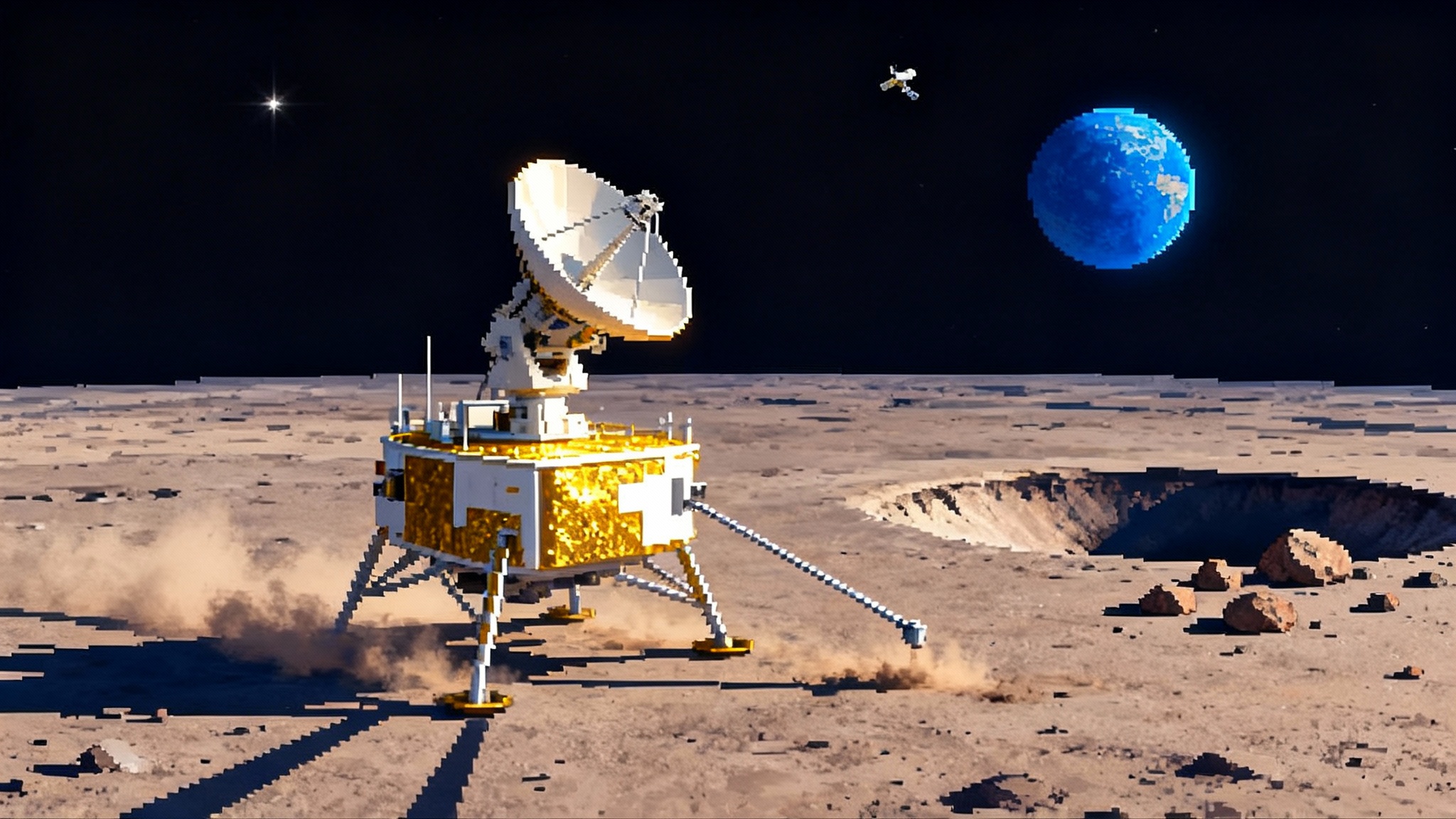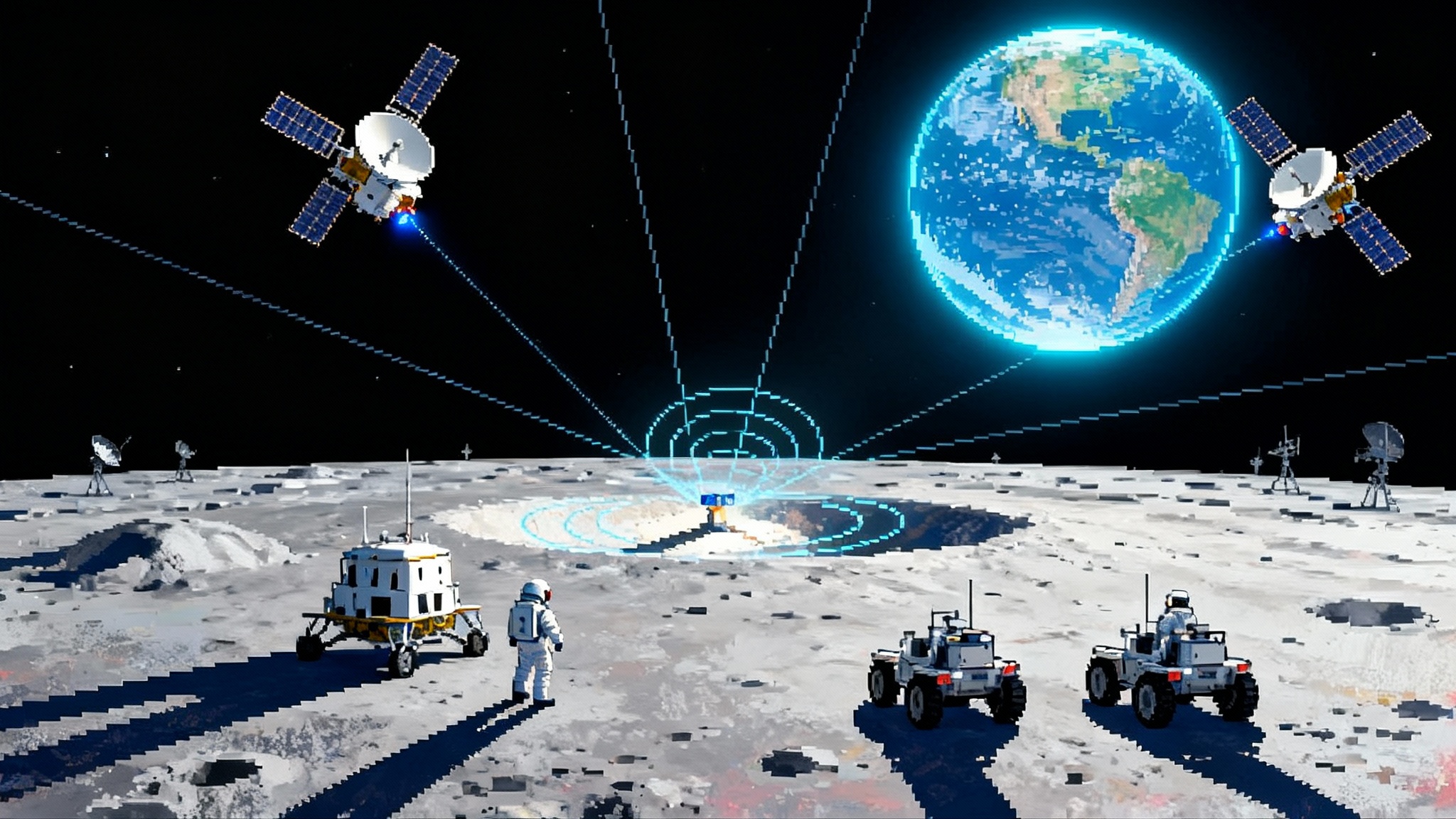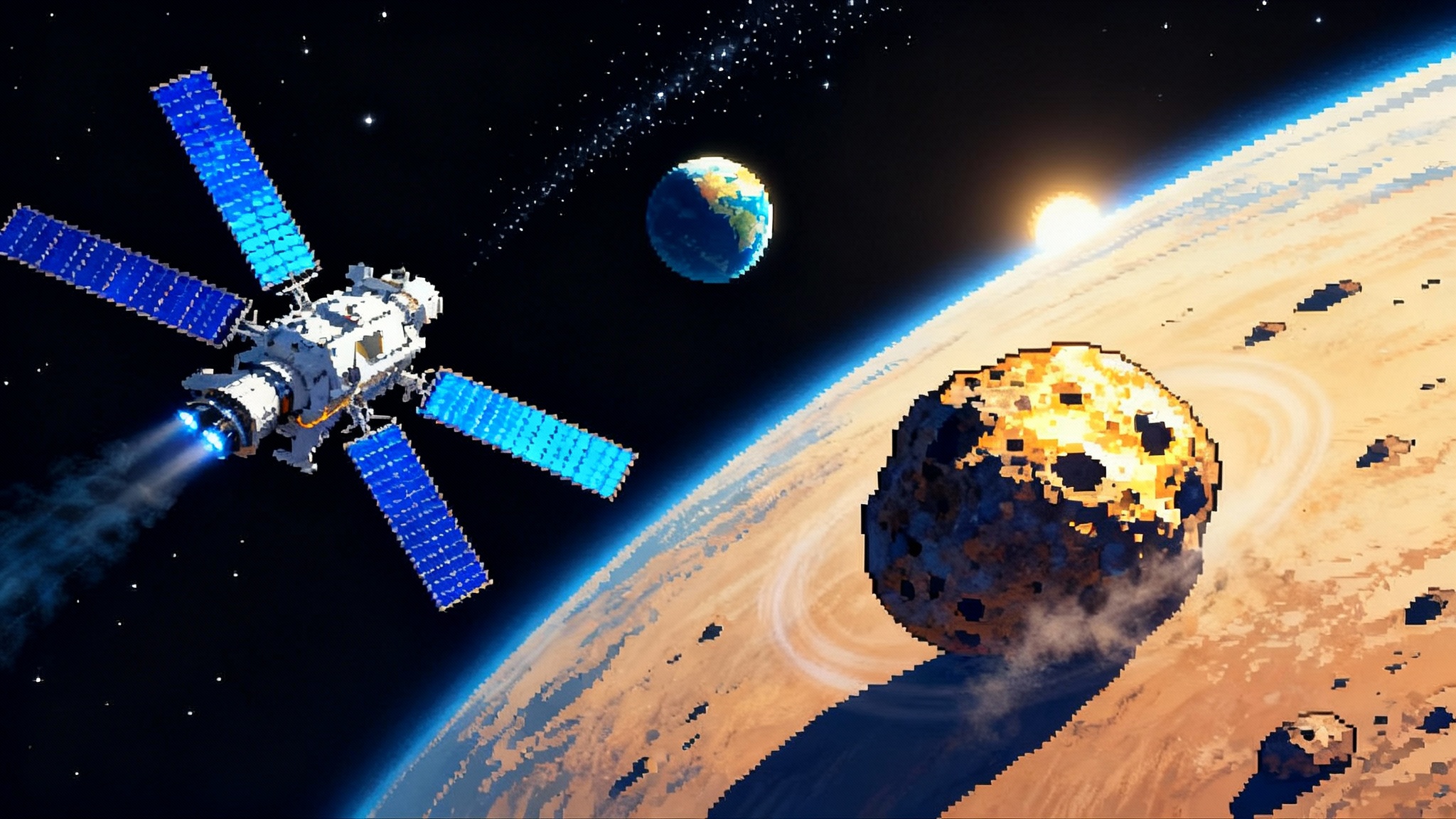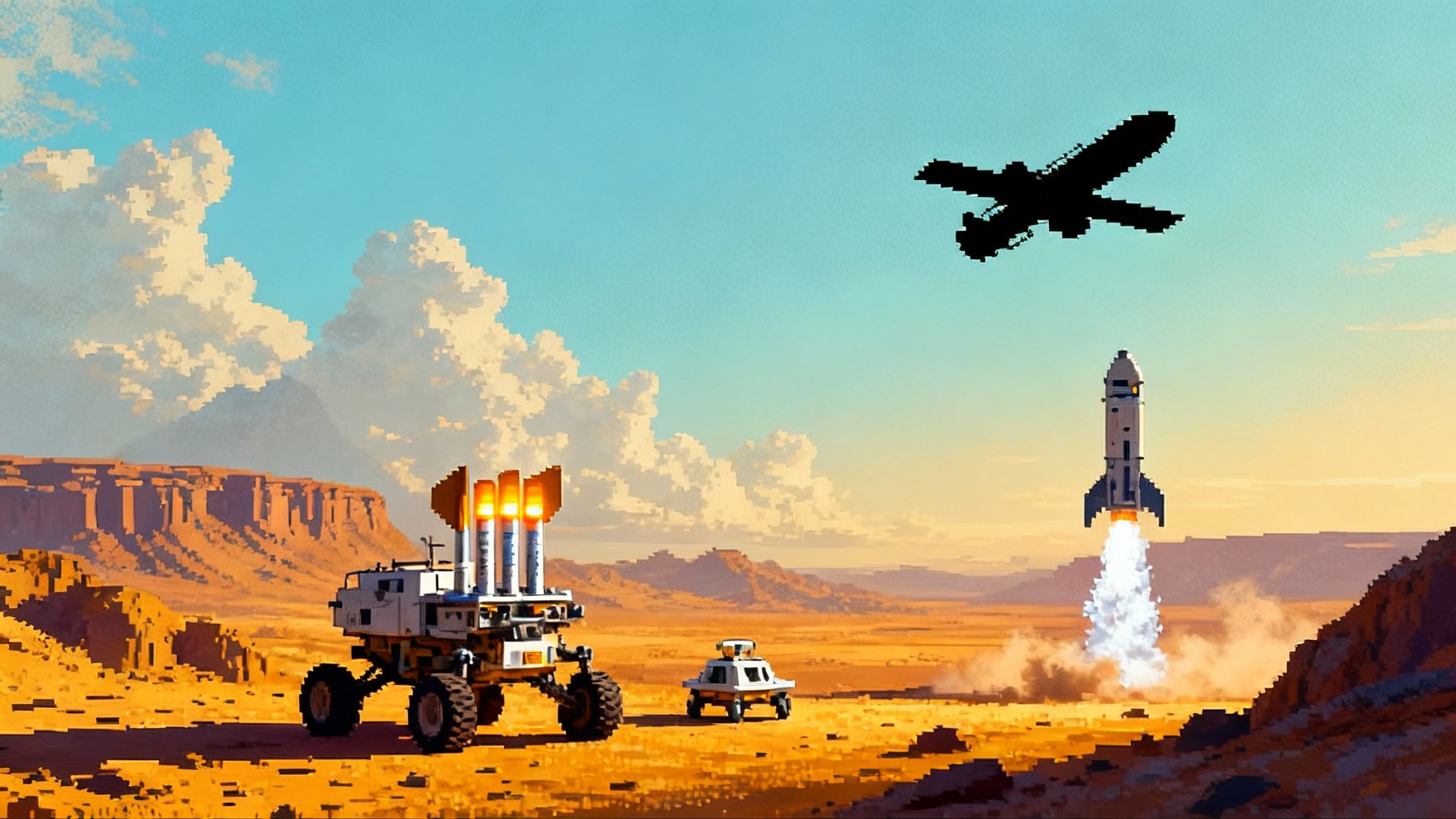Dragonfly Enters Build: Titan’s Airborne Science Takes Off
In 2025, NASA’s Dragonfly moved from drawings to hardware, clearing CDR and completing heatshield and backshell tests. Here is why Titan’s multi‑hop rotorcraft is the template for off‑world aviation in the decade ahead.
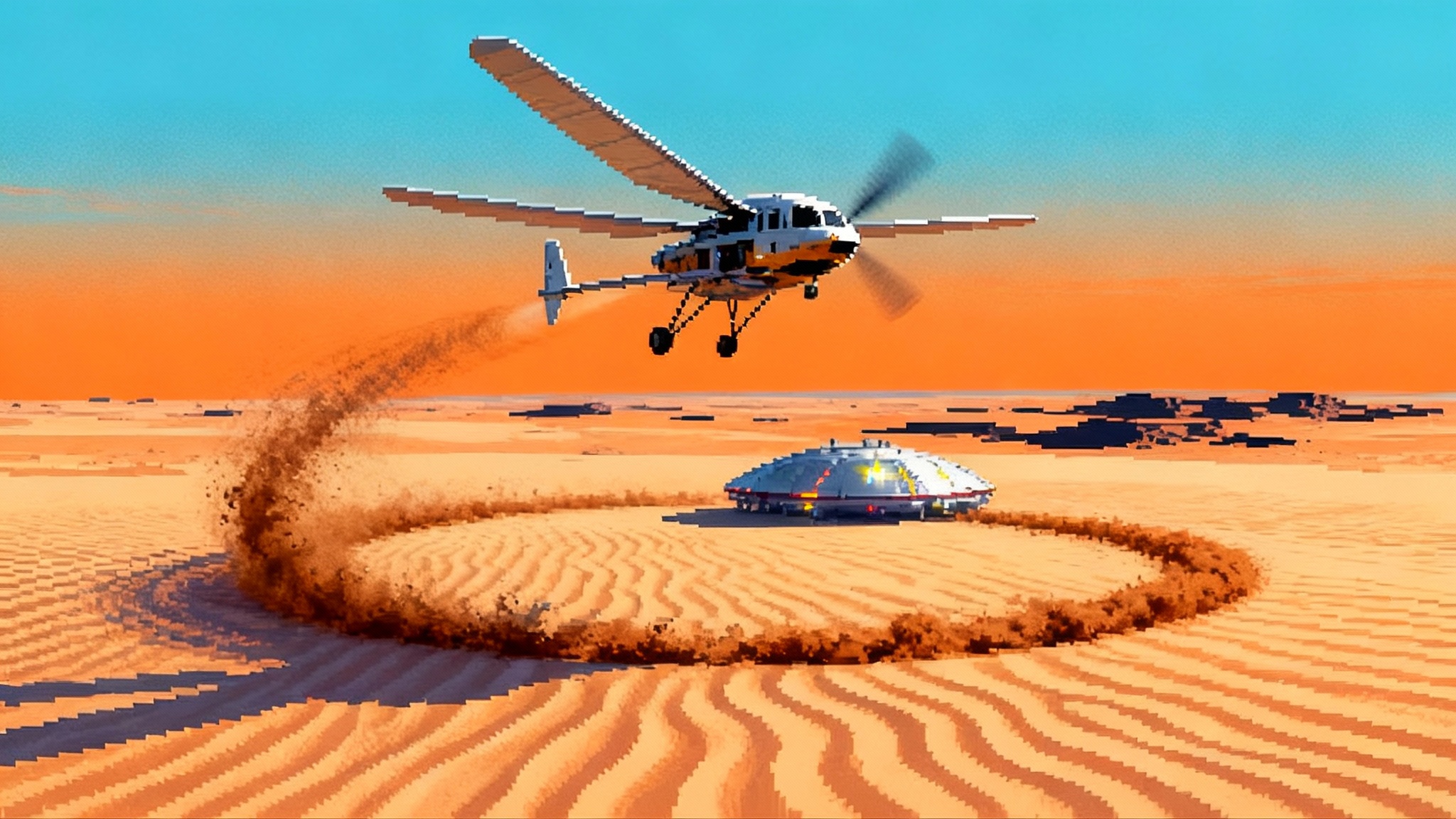
The year flight on other worlds became real
In April 2025, Dragonfly stopped being a bold drawing and started becoming hardware. The rotorcraft that will explore Saturn’s moon Titan passed its Critical Design Review, the moment when a mission’s design is declared ready for full scale fabrication and integration. The team at Johns Hopkins Applied Physics Laboratory moved from computer models to machining flight parts and staking out cleanroom floor space for assembly. This is not just a box checked on a schedule. It is the point when a new capability for planetary science takes off, literally. Dragonfly’s design clearance in April 2025 is the green light for the first multi hop aerial science campaign on an alien world.
By September, a different team was stress testing the shell that must deliver this flying laboratory through Titan’s hazy sky. Lockheed Martin fabricated the flight heatshield and backshell and ran them through cure and thermal cycles. NASA’s update also confirmed the plan to begin full mission integration and test in January 2026 and target a July 2028 launch on SpaceX Falcon Heavy. The path is precise and practical, the kind engineers can set their watches by. These are the dry facts behind an inflection point. Flight on other worlds is moving from milestone press releases to shop floor reality. See NASA’s development note on “soaring through key activities,” which details the aeroshell progress and integration timeline, for the latest program picture. Aeroshell and schedule update, September 8, 2025.
Why Titan is the perfect airfield
Titan gives flight a head start. Surface air pressure is about half again higher than on Earth, while gravity is roughly one seventh. In simple terms, rotors bite into thick air and the craft weighs less. A baseball lobbed on Titan would hang in slow motion. Dragonfly’s eight rotors, arranged in four coaxial pairs, use that gift of physics to fly like an oversized drone. The thick atmosphere also cushions landings. Low gravity and slow descent stretch the margins for safety. What is difficult on Mars becomes routine on Titan.
But Titan also challenges the team in every other way. Temperatures hover near minus 185 degrees Celsius. The surface is dim, lit by sunlight filtered through orange haze. The ground is a museum of chemistry, with dunes of organic sand, pebbly riverbeds carved by liquid methane, and possibly icy crusts where material has frozen solid.
That is why Dragonfly is not a stunt helicopter. It is a geochemistry mission with wings. The lander carries a full science lab: a mass spectrometer to analyze organic molecules, a gamma ray and neutron instrument for elemental composition, a drill that can pull material from a few inches beneath the surface, cameras for both terrain mapping and close ups, and a meteorology and geophysics suite to listen and feel Titan’s environment. The rotorcraft’s mobility lets the science team choose where to work next instead of waiting for luck to roll a rover onto a good patch of ground.
Multi hop science, explained
Think of Titan’s surface as a city at night. Many neighborhoods are interesting, but streetlights are sparse and you only have enough battery to visit a few at a time. A traditional lander is stuck under one streetlight. A rover can cross blocks but must crawl around potholes. Dragonfly can lift off, fly across town, and set down in a well lit spot that the team has already scouted from the air.
The mission plan uses Titan’s long day night rhythm. One Titan day equals about sixteen Earth days, with roughly eight days of darkness and eight of light. Dragonfly’s radioisotope power system charges batteries during the long night. When the sun returns, the craft wakes, samples and flies a hop to a new site, then radios the day’s data home. Repeat. The cadence is deliberate but flexible. If the team sees a high priority outcrop, Dragonfly can detour on the next hop. If the wind looks unfavorable, the craft can wait a cycle.
This hop model unlocks a new kind of field campaign. Picture stepping stones laid across an ancient river delta. Dragonfly can land on a dune crest to sample organic sands, then fly toward a darker patch that might be an evaporite deposit around a dried lakebed, then hop again to the margin of a possible cryovolcanic flow. Each site informs the next. The camera suite maps future routes from the sky. The gamma ray and neutron measurements provide a rapid triage of surface composition before the team commits to drilling and detailed chemistry. The result is not just more data, it is a coherent story told across many pages of Titan’s landscape.
The autonomy that makes it possible
No one will joystick Dragonfly. The radio round trip from Earth to Saturn and back can take more than two hours, which means the vehicle must fly itself. Autonomy is the mission’s quiet superpower.
- Navigation built in. Without satellites for positioning, Dragonfly must build its own map from onboard sensors. Vision algorithms compare the motion of rocks and dune ripples between frames to estimate speed and drift. Inertial sensors keep track of attitude. Radar altimeters and lidar guide takeoff and landing. A hazard detection system checks the landing zone and can wave off if the surface looks treacherous.
- Energy and thermal judgment. The vehicle sleeps in a warm shell surrounded by a thick layer of foam insulation that APL recently tested for structural and thermal performance. Heat from the radioisotope power source keeps the lab cozy in Titan night. The flight software plans hops around the battery’s state of charge and the lighting the cameras need to see surface features.
The autonomy stack does not just fly. It reasons about the science plan over weeks and months so the mission never gets trapped by a bad sequence of decisions. As navigation networks mature closer to home, the lunar navigation infrastructure blueprint offers a model for how future flyers could coordinate with surface assets.
Engineering reality in 2025
Dragonfly’s progress this year is concrete. The design is locked. The aeroshell and heatshield structures have been built and cycled through harsh temperature swings. Engineers have been testing rotors in Titan like airflows at NASA Langley’s Transonic Dynamics Tunnel to pin down aerodynamics and vibrations. Hardware for the science instruments is arriving at integration labs. The heart of the mass spectrometer has cleared acceptance review and is being prepared for space environmental testing. The radio that will get Titan’s whispers back to Earth has been exercised on the bench. The build is not ceremonial. It is measured in torque specs, vibration table scripts, and room temperature survival tests at minus 185 Celsius equivalents.
Programs also move at the pace of logistics. Lockheed Martin’s aeroshell work must stay in step with the internal lander build at APL. Honeybee Robotics queues drilling system parts alongside other deep space hardware in its Pasadena facilities. Malin Space Science Systems is delivering camera assemblies that must be precisely calibrated to the navigation software. NASA centers from Goddard to Ames and Langley feed instrument components and analysis. The Department of Energy’s teams are on the hook to deliver a flight qualified radioisotope power generator on time. Everyone’s Gantt charts must line up.
The accelerationist case: this is the blueprint
Dragonfly is not a one off designed for a single corner of the solar system. It is a pattern for how we will explore complex worlds for the next decade.
- Autonomy over complexity. Worlds with thick atmospheres, hidden hazards, and long light time demand vehicles that can plan, see, and decide on their own. Dragonfly’s autonomy stack, refined in Titan like simulators and environmental chambers, is a direct template for Mars helicopters that carry tens of kilograms of payload. It is also a foundation for aerial platforms in the Venus cloud deck that must float, navigate, and survive corrosive chemistry.
- Rapid site to site science. Hopping between sites turns planetary fieldwork from a roll of the dice into a survey that connects geology across distance. This approach will be the norm for the next Mars rotorcraft, which can scout ahead of rovers, reach cliffs and canyons, and bring samples from hard to reach strata. It aligns with the commercial race to reboot Mars Sample Return, where mobility can de risk and accelerate surface campaigns.
- Scalable systems. Dragonfly’s design separates the science lab from the flight system. That modularity allows a family of vehicles that reuse avionics, power, and autonomy, while swapping instruments to suit Mars, Venus, or even nitrogen rich exoplanet analogs in the far future. The companies involved today are building a supply chain for off world aviation. Once proven, that chain will serve government missions and commercial scouts alike, helped by heavy lift launchers like the New Glenn's Mars Shot era.
How this scales to Venus, Mars, and beyond
Venus flyers will not look like Titan’s octocopter, but they will use the same ideas. Balloons or variable buoyancy craft in the temperate cloud layers must navigate in low visibility, manage power in long cycles, and coordinate science from platforms that drift with the wind. The autonomy, hazard assessment, and instrument triage developed for Dragonfly are directly relevant. A Venus aerobot can do site selection from the sky, then dip or climb to sample at different altitudes much as Dragonfly picks landing sites across the dunes.
Mars helicopters 2.0 are equally clear beneficiaries. Ingenuity proved powered flight on Mars and provided stunning images, but it was a scout. The next generation will carry serious payloads and operate as part of a system with landers and rovers. They will need robust autonomous navigation over canyons and layered deposits, precise landing on small pads near instrument stations, and routines to protect their motors and batteries from dust and cold. Dragonfly’s approach to long cycle energy planning, safe landing logic, and modular science interfaces is the right starting point.
For commercial explorers, mobility is the difference between a single postcard and a documentary. Companies that deliver payloads to Mars orbit, Venus atmosphere, or Titan’s skies will sell more than a ride. They will sell multi site coverage. A small commercial scout craft that can map a potential landing ellipse from the air in a week is worth more than a static camera that watches one spot for a year. Dragonfly sets expectations for what customers will ask vendors to deliver: a reliable avionics stack, validated autonomy, clear interfaces for instruments, and proven environmental survival.
The risks that matter and how to reduce them
Dragonfly’s path is ambitious. Three risks dominate.
- Entry, descent, and landing. Titan’s atmosphere is helpful for flight but brutal for arrival. The aeroshell must handle intense heating and loads during ballistic entry before the parachute and landing sequences begin. The work in 2025 to fabricate, cure, and thermal cycle the heatshield and backshell is the right mitigation. Next, static load tests and the installation of the thermal protection system will close the loop. The practical takeaway for future flyers is to start aeroshell work earlier and carry margin for materials with long lead times.
- Autonomy in low light. Titan is dim, and haze can flatten terrain contrast. Dragonfly’s camera system and algorithms must lock onto features that sometimes look like a snowy field at dusk. The fix is layered sensing. Do not rely on a single modality. Fuse cameras, lidar, radar altimetry, and inertial cues. Test navigation on mixed terrains that resemble dunes, cobbles, and smooth crusts, and do it at scale in tunnels and outdoor ranges where wind and dust can surprise your models.
- Energy logistics. Long nights and cold soak threaten batteries and thermal systems. The mission’s answer is to make patience a feature. Plan a hop per Titan day. Accept that waiting is part of staying alive and collecting better data. Future Mars and Venus flyers should copy this mindset. Define operations around environmental cycles rather than trying to fight them.
What to do next if you build, fund, or study flight on other worlds
- Establish a shared autonomy stack. NASA and partners should package Dragonfly’s flight software concepts into a reusable library with documented interfaces and test vectors. Offer it through an open program with export controlled pieces handled properly. This will cut years from the next Mars helicopter and any Venus flyer.
- Create a cross planetary flight test campaign. Fund a standing test team and facilities that rotate between Titan like, Mars like, and Venus like environments. Use wind tunnels, cryogenic chambers, and desert ranges with instrumented pads. Invite commercial teams to bring their vehicles and sensors. Publish the results so mission designers can make evidence based trades.
- Procure mobility as a service. For some targets, the right move is to buy a flight proven scout from industry and focus government dollars on the science payload. Define clear acceptance tests and operational guarantees rather than dictating the exact vehicle.
- Design instruments for flight first. Cameras, spectrometers, drills, and samplers that assume vibration, dust, and constrained power will succeed more often. Build more hardware with the rotorcraft environment as the baseline instead of modifying lander instruments later.
- Train the field teams now. Multi hop missions shift workload from a single landing site team to a campaign that looks like an expedition. Plan for daily decisions on where to go next, when to sample, and how to balance risk and reward. Build tools that help scientists and engineers make those choices quickly and visibly.
The narrow edge between hype and history
It is easy to oversell any space milestone. But this year’s Dragonfly progress is not hype. A design review is a binary gate. You pass or you do not. A heatshield either survives its thermal cycles or it does not. Rotors either meet the aeroelastic limits in the tunnel or they do not. In 2025 the facts are gate by gate and test by test. That is what makes this moment different. The rotorcraft is entering build with hardware already proving it can endure the trip, fly the plan, and protect the lab.
If you step back, the shift is bigger than one mission. For six decades, the core capability in planetary exploration was landing and roving. Aviation was a curiosity. In the next decade, it becomes standard kit. Missions will write mobility into their requirements and budgets from day one. Flight on alien worlds will move from exception to expectation.
The closing shot
Imagine the first hop. Titan’s horizon glows dim orange. Eight rotors spool up and throw a ring of dust. The craft lifts, slides forward, and ahead a darker patch of ground grows in the camera feed. Guidance calls it safe. The drill will taste a new chemistry before Earth’s night is over. That scene will repeat, hop after hop, a slow aerial march across a world that has guarded its secrets for four and a half billion years. Dragonfly’s build has begun. The decade of off world aviation begins with it.

